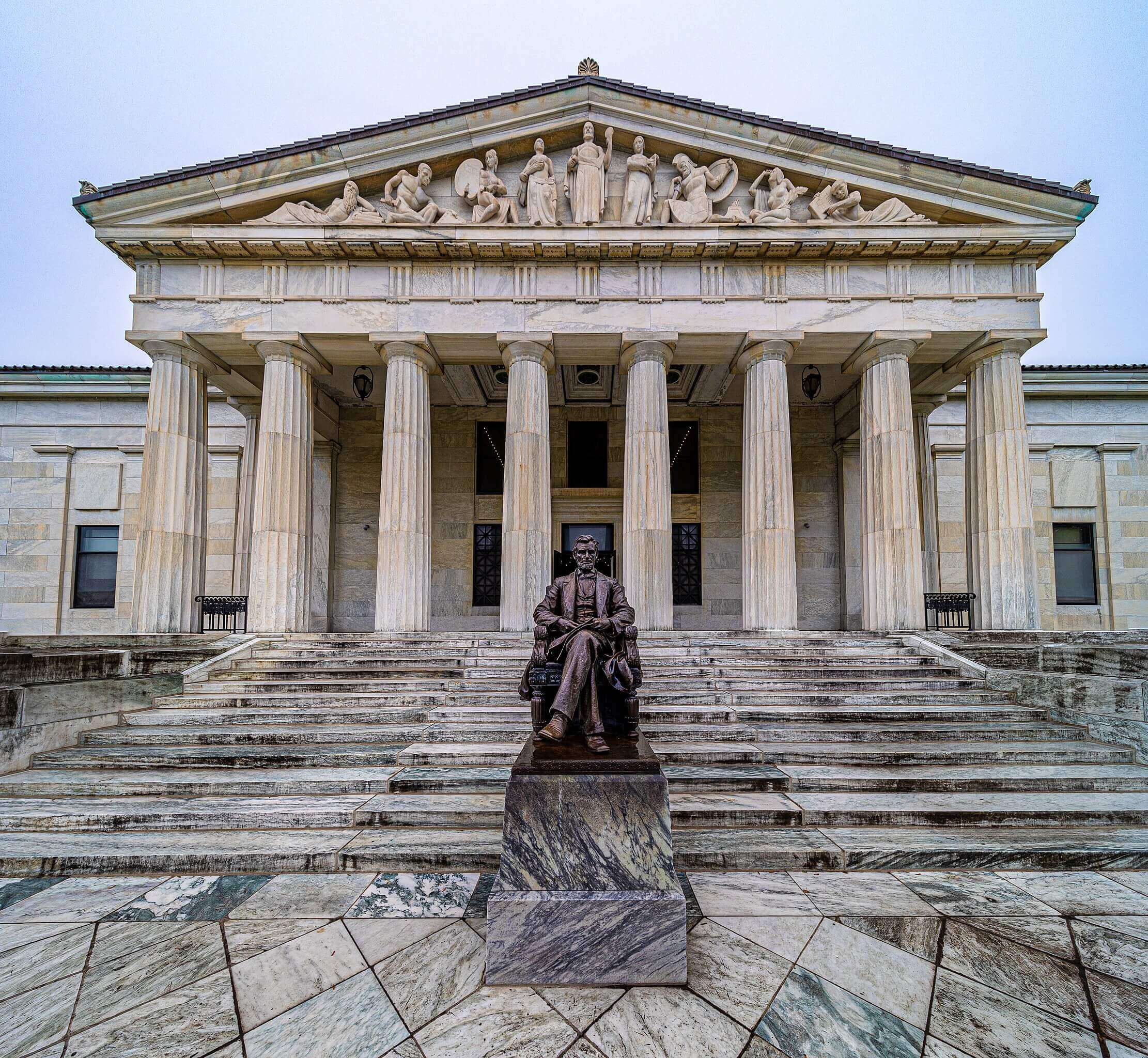The Pan-American Exposition was an event held in Buffalo, NY from May 1 through November 2, 1901. It was a six-month World’s Fair designed to highlight culture and technology from the Western Hemisphere.
Where and Why the Exposition Took Place
The Exposition took place not long after the Spanish-American War and served as an important confirmation of the relationships and mutual benefits that could be continued throughout North, South and Central America.
Buffalo was selected to host the Fair in part because of its population of 350,000, making it the eighth largest city in the U.S. at the time.
Location and access to transportation were also key factors in the decision to host the Fair in Buffalo. Buffalo was located within a 500 mile radius of many major cities and close to Canada and Niagara Falls, making it easy for many people to reach.
Another major reason was Buffalo’s location along the Erie Canal. The construction of the Erie Canal helped Buffalo eventually become the largest inland port in the nation and led to the creation of a large network of transportation to the city, including ships and trains.
Visitors who arrived to Buffalo by train would often use the Belt Line Railroad’s Central Park Station located in North Buffalo near the intersection of Starin Avenue and Amherst Street. “Buffalo Trains and Trolleys: Bob Venneman’s Recollections” recalls that you could travel around the city for just a nickel back when this station was still active, including while the Exposition was happening. The train station more recently has been converted into an Airbnb property with a history of more recent renovations.
Technological Highlights
A key technology that was highlighted at the Fair was alternating current (AC) power transmission, which was power that was generated at nearby Niagara Falls and helped to power the Exposition’s many light-filled buildings, both interior and exterior. AC power was a significant development because it allowed for power to be transferred at high voltage without significant losses in efficiency.
This was a primary attraction for industrial development in the Buffalo region, as reliable, affordable, and abundant power delivery was a differentiating factor for the area. Energy-intensive industries, such as steel and automotive manufacturing, were particularly attracted to the area and in turn helped to create job opportunities and attract a growing population to the city.
This led Nikola Tesla to declare that “Niagara Power will make Buffalo the greatest city in the world!” Tesla went on to consult the Niagara Falls Cataract Construction Company on how to best deliver the power it delivered, among a long list of inventions and technological advancements he is credited with.
That transfer of power also allowed for expansive light displays at night, more spectacular than anything seen at prior Expositions. An article from the Scientific American Supplement in 1901 declared, “This almost imperceptible increase in the power of the lights as they are turned on will constitute one of the charming effects of the whole scheme, of which the visitor will never tire.”

Fair Location
The grounds of the exposition were located between Delaware Avenue and Elmwood Avenue on the western edge of what is today’s Delaware Park.

Assassination of William McKinley, United States President
In spite of everything else that happened throughout this six month event, the Fair is best known as the location of the Assassination of William McKinley, who was the US President at the time. This occurred on September 6, 1901 inside the Temple of Music building. That building, along with most others that were built for the World’s Fair, was torn down after the conclusion of the event. It stood where Fordham Drive currently is, between Elmwood Avenue and Lincoln Parkway. While McKinley didn’t pass immediately, he died on September 14, 1901 due to infection and gangrene from the wounds and surgeries that followed.

Unfortunately that wasn’t the only prominent death that occurred during the event, as the Chilean minister to Washington also passed away while in Buffalo.
A Mixed Long Term Legacy
Even without the assisination of a sitting president, the event had a mixed long term outcome. While the attendance of 8 million people may sound like a lot at the moment in Buffalo, the overall attendance fell short of the expectations of 20 million attendees, according to the Theodore Roosevelt Inaugural Site Foundation.
Nearly all buildings were constructed with the emphasis on build speed rather than lasting use. Most buildings were demolished within the conclusion of the Exposition. The location that was used for the Exposition turned into a mixture of homes, residential streets, and parts of Delaware Park.

An outlier in construction and permanence was The New York State Building, which is located inside current-day Delaware Park at the intersection of Nottingham and Elmwood Avenues, and was built to last. In 1902 it became the Buffalo History Museum. Beyond its exhibitions in the museum, the building serves as a host to a wide range of public events and can be rented out for private use such as weddings and other catered events.
The Buffalo History Museum also provides a detailed map outlining where current Buffalo streets are located relative to the original Pan-Am Grounds.
While the Electric Tower that was originally built for the Exposition was along the many demolished buildings, the new Electric Tower that was built in 1912 was based on that original version. Today it serves as the location of Buffalo’s New Year’s Eve ball drop, and the building is often illuminated with colors matching current events or relevant local sports teams.

Population Growth
While most buildings were quickly demolished, the more significant impact was driven by population growth that was credited to the Exposition. The Theodore Roosevelt Inaugural National Historic Site credits the World’s Fair as a reason why some visitors ultimately decided to make Buffalo their permanent home, leading to a population increase in the region as well as expanding diversity.
US Census data reports Buffalo’s population as 352,387 prior to the 1901 Pan-American Exposition. That number climbed over 20% to 423,715 by 1910 and jumped nearly another 20% by 1920 to a population of 506,775. That metric ultimately peaked in 1950 at 580,132.
Put Me Off At Buffalo
A song titled “Put Me Off At Buffalo” was used to promote the Exhibition, describing a trip that started in Albany and emphasized “Don’t forget to put me off at Buffalo.”
In response to the shortcomings and high cost of the Exposition, however, a comedic track titled “Don’t Put Me Off at Buffalo Any More” was later released in 1901.

Part of Buffalo’s Heritage
The 1901 World’s Fair held in Buffalo had mixed results in terms of its long term value to the city, but its legacy can be felt to this day.
While the exposition helped increase population and highlighted Buffalo’s prominence as a transportation hub and technological leader, it fell short of attendance expectations and was overshadowed by the assassination of President McKinley. Still, the New York State Building (now the Buffalo History Museum) serves as an important reminder of Buffalo’s selection for the event, which cemented its status as one of the most successful U.S. cities in the late 1800s and early 1900s.

 Fair Housing Notice
Fair Housing Notice 